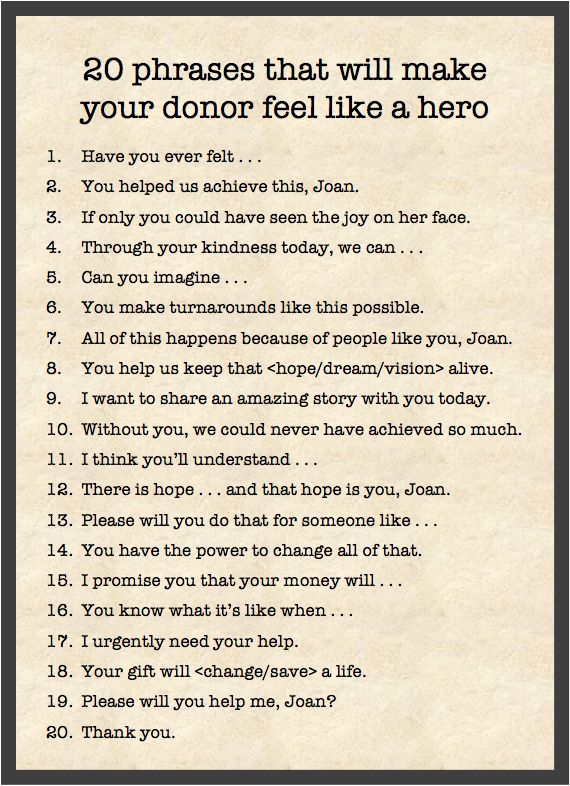When you address your reader, do so in a personal manner. Instead of using an opening line reading, “Dear Supporter” use the donor’s name. When a letter is not personalized a donor can feel like a number in a machine and automatically reject the letter before it even gets read! The more personal information you use – the individual’s name, address, donation history – the more valued the donors feel and more likely they are to read and be receptive to the letter.
This personal, donor-centric, approach should remain a theme throughout your entire letter. If you do not acknowledge their individuality, you are much less likely to receive financial support from them.
2. The Introduction
Begin your letter with a bang. Ask a bold question, tell a story about an empowered program participant, or share a surprising statistic. Draw the reader in and get them engaged.
Next, make sure your donor is up to date on the organization’s programs. What have been the successes of your most recent project? What did last donation help achieve? Illustrate the importance of their donation by outlining the impact of their past donations and the potential in their future donations. Make it tangible for them.
Give thanks to donors for their past contributions. Remind them of the integral part they play and assure them that they are still needed. Help them to understand that you truly need their help to keep your program(s) successful.
The third aspect of the introduction is ensuring that you focus on a specific project or initiative. Don’t overwhelm the reader and don’t give more information than they care about. Rather, share details and stories with them about one particular project or a single overarching theme that, based on past involvement, would be of interest to them.
3. The Ask
Once you’ve brought your donors up to speed on the organization’s programs and thanked them for their critical involvement, it is time to move on to ‘the ask’. This is the heart of the letter: when you come forth and ask donors for their financial support.
In order to do this effectively and respectfully, you should first explain the issue and outline the initiative/project with specifics. Don’t expect people to blindly donate without receiving specific information on the issue. When explaining the issue, you want the reader to understand how critical your programs are, and how effective your organization is in effectively addressing that need.
Third, you want to give concrete recommendations for the donor. Suggest a few different dollar figures they can donate and what each contribution can achieve. Make sure the suggested amounts are appropriate for the particular donor, and be sure to state the impact of each gift so the donor knows exactly what their donation dollars can provide. For example: let them know that their twenty-dollar donation will feed one dog for one month.
Last, explain the consequences of inaction. Outline to the donor what will happen (or not happen) without their financial contribution. For instance, you can remind the donor that without donations like theirs, cats and dogs and other stray animals will go without food and shelter. (Note: Make sure you don’t dwell long on this – you do not want the letter to have a negative tone, just a realistic one).
4. The Closing
There are two crucial aspects of the conclusion to your fundraising letter.
First, you need to give thanks to the donors in advance for their support. By thanking donors in advance, you subtly assume that they will give financial support. Furthermore, giving thanks shows that you believe they will do the right thing and provide financial support.
Second, remind the donors why their contribution is so important. Reinforce the importance of the project, the necessity of their specific support, and the consequences of inaction.
Ultimately, you want to make the donor the hero of your story by doing four things for them:
1. Make it easy for them
2. Add value to their lives
3. Personalize their donor journey
4. Provide access anytime, anywhere (include a link at the end of the letter where they can learn more)
Happy fundraising!






